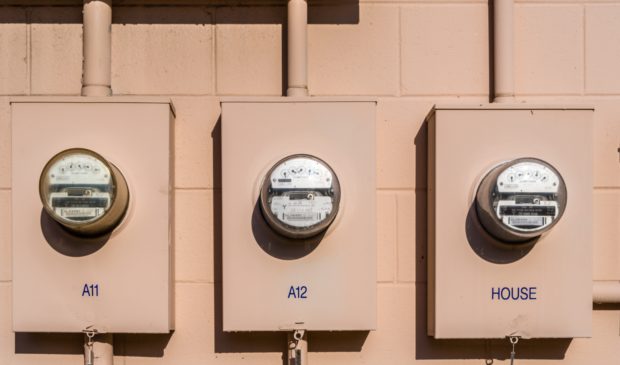Consumer advocates warn Austin Energy’s rate increase could have devastating impact on residents
Tuesday, June 28, 2022 by
Kali Bramble As they prepare for next month’s public hearing, participants in Austin Energy’s rate review case are pushing back against a proposal to significantly alter pricing of the city’s electricity supply.
The utility proposes to reorganize the five-tiered structure used to calculate residential service rates into three tiers, eliminating existing premiums for higher consumption brackets and implementing a uniform change to the monthly customer fee from $10 to $25 for all residential consumers. Factoring in adjustments to small and large business rates, Austin Energy claims such shifts will amount to an average base rate increase of 7.6 percent, but others argue that the figure for residential consumers is closer to 17.6 percent.
“It’s a complicated set of decisions, and it’s a lot of money,” John Coffman of the city-appointed independent consumer advocate team told the Austin Monitor. “The cost of living in Austin is a big issue by itself … and this could be a significant amount of money that residents lose in discretionary income. All of these decisions have economic impacts, and this alone could affect the economy in Austin.”
In its filing package released in April, Austin Energy claimed the utility has undergone “financial deterioration” as revenues fail to keep up with the infrastructure demands of its rapidly growing customer base. Supporting this claim is its analysis of “test year” 2021, which identified a base rate revenue gap of $46.8 million.
Yet participants in the deliberation process from a wide range of consumer groups, including the Sierra Club, Texas Industrial Energy Consumers, environmental activist Paul Robbins, NXP Semiconductors and an independent consumer advocate team, all take issue with Austin Energy’s analysis. The reviewers argue that the highly unusual Winter Storm Uri outages skew the data, causing the utility to significantly overestimate its revenue deficiencies.
Participants also take issue with the proposed allocation of increased rates, which they argue both eliminates incentives to conserve energy and disproportionately impacts customers with lower energy footprints. Particularly contentious is the 150 percent increase in the fixed customer fee, which critics say would be asymmetrically burdensome to lower-income users and would outweigh the financial benefits of conserving energy.
“Under Austin Energy’s proposal, the highest marginal cost for energy would be 4.8 cents per (kilowatt-hour), compared to 10.81 cents per kWh today,” Ezra Hausman wrote in a statement on behalf of Sierra Club, Public Citizen and Solar United Neighbors. “That means that the payback time for an energy saving investment (or for on-site generation) would be more than twice as long as it is today. Many such investments might no longer be economically beneficial to the customer at all. In addition, customers who made such investments under the good-faith understanding that their contribution to clean energy and system resiliency would be rewarded, would suddenly experience a bait-and-switch as their ability to control their energy costs is pulled out from under them in favor of fixed customer charges.”
As for the issue of lower-income households, Austin Energy has pushed back against claims that the new rate structure would have a disproportionate impact, citing findings that lower income does not correlate with lower energy usage. But many have noted this argument is questionable given that larger-scale research has concluded the opposite, and that Austin Energy’s use of customers enrolled in its customer assistance program as the watermark for lower-income energy usage does not accurately reflect the demographic.
While there are a range of professional opinions, Coffman believes moderate shifts to the base rate system could provide Austin Energy with some financial relief while maintaining equitable outcomes for residents and small businesses. In the consumer advocates’ statement, Coffman writes that AE’s base revenue requirement is significantly less than projected, falling in the range of $6.5 million that would lower the average rate increase from 7.6 to 1 percent. Furthermore, the advocates recommend a four-tier structure that retains incentives for energy conservation, as well as a significant reduction of the proposed $25 fee.
“AE’s proposed residential customer charge would be more than 2.7 times higher than the average of customer charges for Texas investor-owned electric utilities,” Coffman said. “Under no circumstances should the residential customer charge exceed $13 in this case.”
Austin Energy will file a rebuttal to criticisms on July 7, followed by a final conference from July 13-15. From there, an impartial hearing examiner will make a recommendation to City Council, which will conduct a public hearing at City Hall in November. Those interested in diving deeper can find all documents related to the case on the city clerk’s website.
The Austin Monitor’s work is made possible by donations from the community. Though our reporting covers donors from time to time, we are careful to keep business and editorial efforts separate while maintaining transparency. A complete list of donors is available here, and our code of ethics is explained here.
You're a community leader
And we’re honored you look to us for serious, in-depth news. You know a strong community needs local and dedicated watchdog reporting. We’re here for you and that won’t change. Now will you take the powerful next step and support our nonprofit news organization?











